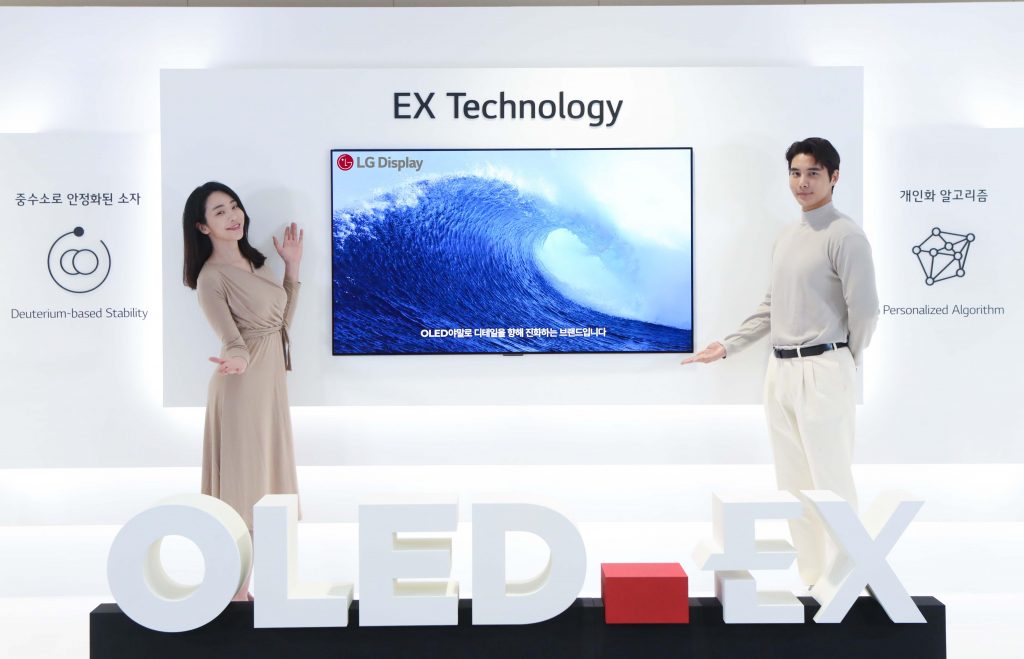LG Display has officially launched the OLED EX, a new OLED display that uses deuterium during the production process, which the firm claims, makes the OLED EX up to 30% brighter than current large-screen OLED TVs.
LG Display will manufacture the new OLED EX panels at two of its OLED factories beginning in Q2 2022 — in the meantime, what is deuterium? LG Display is using deuterium compounds that allow the new OLED EX panels to have up to 30% greater brightness, as the deuterium compounds improve the efficiency of LG’s in-house organic light-emitting diodes. Deuterium is a hydrogen isotope with double the mass of a standard hydrogen atom.
According to Forbes, Deuterium enables such diodes to output higher light levels, but the material’s usage in OLED displays has traditionally been hampered by the fact that Deuterium is rare in nature. According to LG Display, per 6,000 typical Hydrogen atoms, just one atom of Deuterium, which is twice as heavy as Hydrogen, is found.
LG Display, on the other hand, has discovered a way to not only extract deuterium from water, but also to stabilise the resultant compounds so that they can be applied to OLED pixels, allowing them to emit more light while retaining high levels of efficiency over long periods of time.
LG Display claims to have created “personalised algorithms” for its new OLED EX panels, which are based on machine learning technology and capable of forecasting the usage of up to 33 million organic light-emitting diodes (the amount of pixels in an 8K TV is 33 million). So, during CES 2022 next week, we can expect some spectacularly huge and even more stunning 8K OLED EX TVs.
LG Display claims that the higher brightness results in more realistic HDR details and natural colours, with no hardware-level ‘distortions.’
The new deuterium-based OLED panels also have the added virtue of being able to fit into thinner frames. So, on 65-inch panels, for example, the thickness of the bezel is decreased from 6mm to 4mm on OLED EX displays, making them even more aesthetically pleasing and futuristic than before. Narrower frames also tend to produce a more immersive viewing experience, as the physical presence of the display around the image distracts your eye less.

